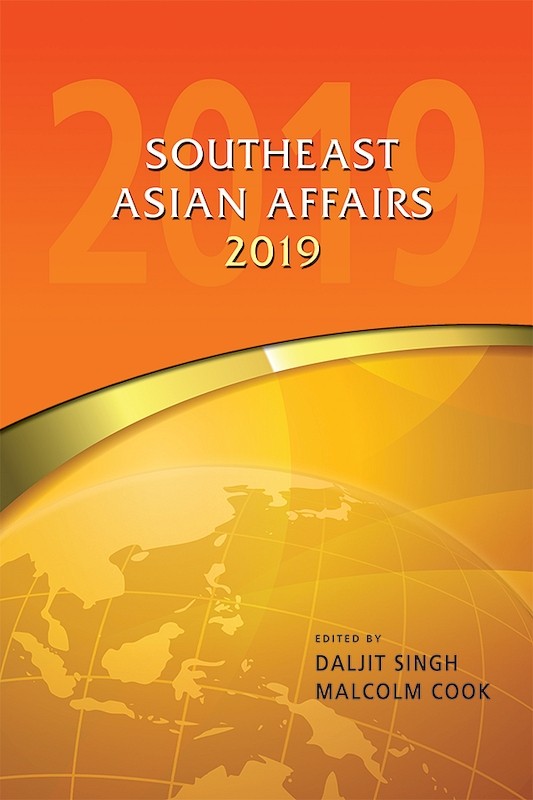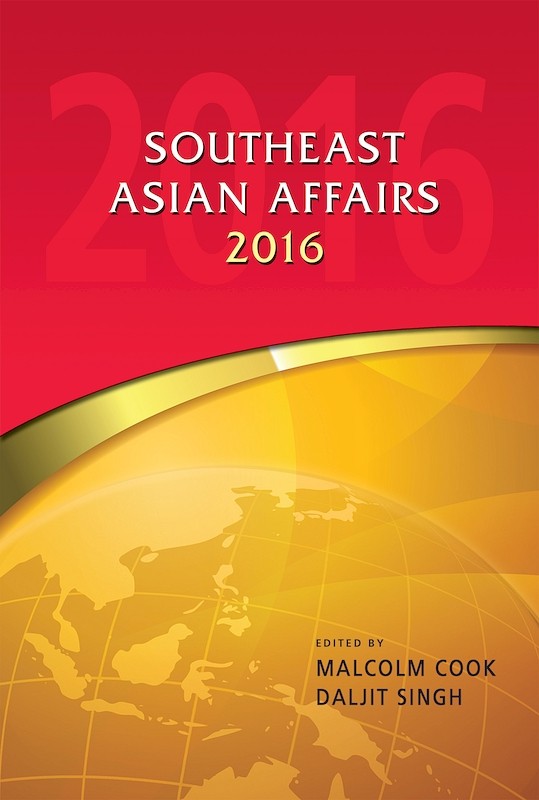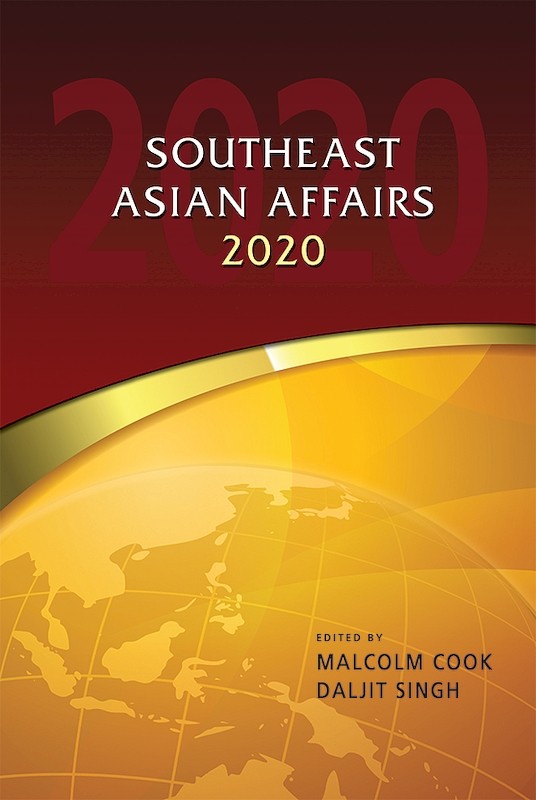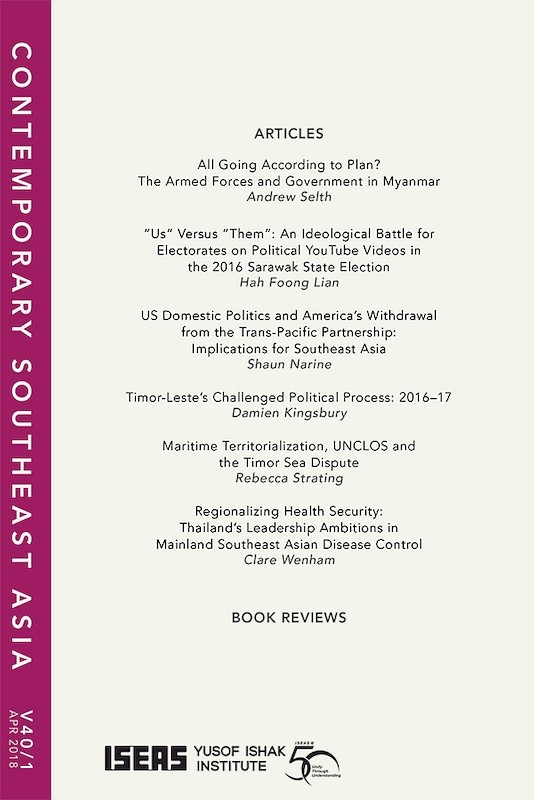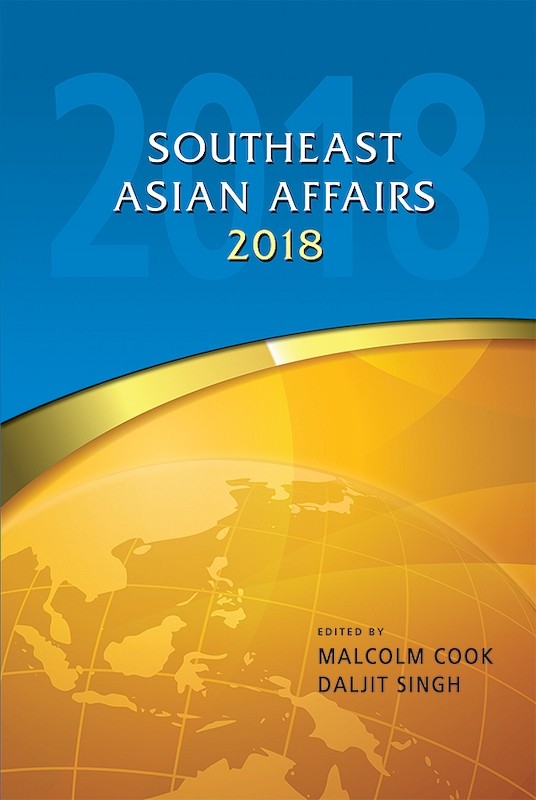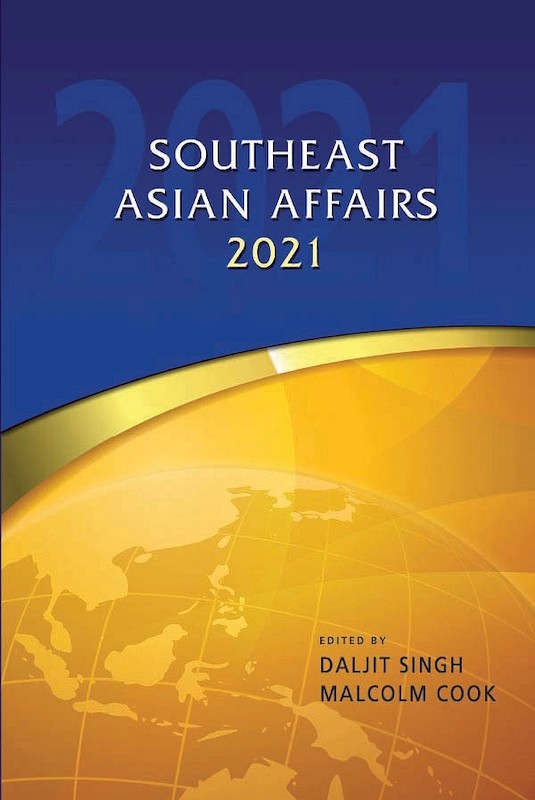Southeast Asian Affairs 2017
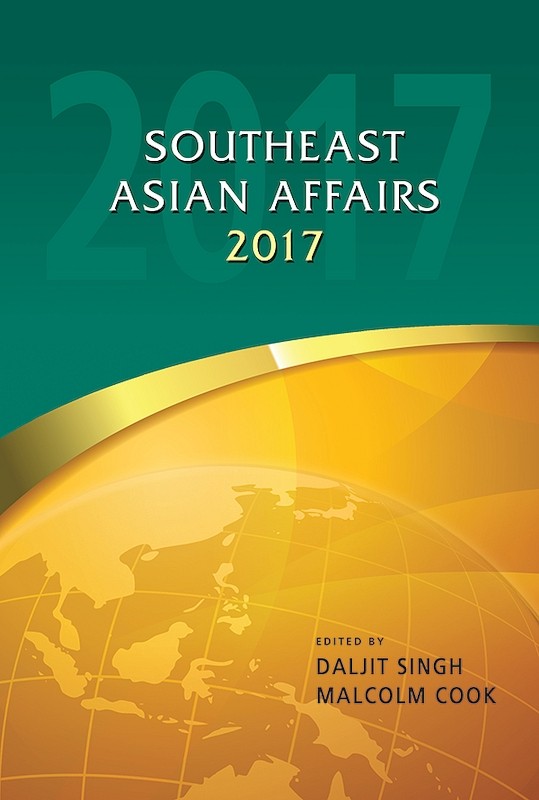
Date of publication:
2017
Publisher:
ISEAS – Yusof Ishak Institute
Number of pages:
435
Code:
SEAA17
Hard Cover
ISBN: 9789814762861
About the publication
Southeast Asian Affairs, first published in 1974, continues today to be required reading for not only scholars but the general public interested in in-depth analysis of critical cultural, economic and political issues in Southeast Asia. In this annual review of the region, renowned academics provide comprehensive and stimulating commentary that furthers understanding of not only the regions dynamism but also of its tensions and conflicts. It is a must read.
— Suchit Bunbongkarn, Emeritus Professor, Chulalongkorn University
Now in its forty-fourth edition, Southeast Asian Affairs offers an indispensable guide to this fascinating region. Lively, analytical, authoritative, and accessible, there is nothing comparable in quality or range to this series. It is a must read for academics, government officials, the business community, the media, and anybody with an interest in contemporary Southeast Asia. Drawing on its unparalleled network of researchers and commentators, ISEAS is to be congratulated for producing this major contribution to our understanding of this diverse and fast-changing region, to a consistently high standard and in a timely manner.
— Hal Hill, H.W. Arndt Professor of Southeast Asian Economies, Australian National University
Contents
-
Southeast Asian Affairs 2017
[Whole Publication, ISBN: 9789814762878], by Daljit Singh, Malcolm Cook, editors -
Preliminary pages
- THE REGION
-
Southeast Asia in an Age of Strategic Uncertainty: Legal Rulings, Domestic Impulses, and the Ongoing Pursuit of Autonomy, by Alice D. Ba, author see abstractWhile the great power dynamics responsible for the heightened strategic uncertainty of recent years in Southeast Asia were unlikely to change in 2016, the year did see a number of outstanding developments. Among the most anticipated was a ruling on the South China Sea by the Arbitral Tribunal housed at the Permanent Court of Arbitration in The Hague. However, domestic developments in 2016 may prove to be as, if not more, defining in their implications for regional security and strategic trends. In the face of heightened flux, three related dangers and imperatives that have long defined the Southeast Asian predicament remained outstanding in 2016: (1) how to ensure that Southeast Asian states are not made casualties of great power conflict; (2) strategies of hedging in defence of Southeast Asian autonomy; and (3) the future of the ASEAN project as a means to greater comprehensive security and in defence of the Southeast Asian voice and institutional centrality.
-
Southeast Asian Economies: In Search of Sustaining Growth, by Tham Siew Yean, Andrew Kam Jia Yi, authors see abstractThe year 2016 was marked by several extraordinary events that provide the context for examining the growth performance of the ten Southeast Asian economies in 2016. The chapter also discusses the main factors that contributed to this growth. The potential issues affecting the economic growth of these countries in 2017 and beyond are also explored in the chapter. The main findings indicate that five of the Southeast Asian economies experienced slower growth in 2016 compared to 2015. Growth was driven mainly by private consumption in most Southeast Asian economies, followed by gross fixed investment, while the contribution of exports to growth decreased for the majority of these economies. The continued projected contraction in China's growth as well as in the EU-15, Japan, and the US affected the growth in Southeast Asia through trade and investment links while domestically, fiscal stimulus was used to promote growth in 2016.
-
Forging the ASEAN Economic Community, 2015 to 2016 — and Beyond, by Munir Majid, author see abstractThe AEC was pronounced at the end of 2015. This chapter traces the build-up to it in 2015, its first year of existence, and the challenges it faces now and beyond. In particular it describes the expectations of the private sector and the role it currently has and can potentially play in the ASEAN economic integration process. Both the public and private sector can be more effective in addressing the challenges, especially non-tariff barriers and measures. The essay recognizes some small steps of progress but emphasizes there is much more that can be done if decisions made in 2015 are executed. However, the election of Donald Trump as the next US President poses additional challenges that demand strong regional economic leadership.
-
Southeast Asia's Demographic Situation, Regional Variations, and National Challenges, by Tey Nai Peng, author see abstractThe changing demographic trend in Southeast Asia is continuing into the present century, with wide variations across countries. While the fertility level in five countries has gone below replacement level, it remains substantially above that level in a few. The region is enjoying the demographic dividend with the working age population making up about 60 per cent of the total population. However, in low fertility countries, the population is ageing rapidly, and labour shortages have resulted in an influx of migrant workers. At the same time, large numbers of migrants from the larger countries have migrated to the West, resulting in a migration deficit of about 10.4 million from the region between 2000 and 2015. Large-scale rural–urban migration has widened the disparity in population growth between urban and rural areas, giving rise to population concentration in a few large cities and the attendant problems. The changing demographic circumstances have posed different challenges to policymakers.
-
U.S.–Japan–Australia Strategic Cooperation in the Trump Era: Moving from Aspiration to Action, by Andrew Shearer, author see abstractRising threats, China's growing influence, and the election of Donald Trump have increased uncertainty among America's Asia-Pacific allies. In this complex and challenging environment, strengthening U.S.–Japan–Australia trilateral strategic cooperation is more important than ever to deter threats, reassure anxious allies, and influence the incoming Trump administration to remain closely engaged in the Asia Pacific. Along with the three countries' strong alignment of strategic interests and values, their high-level capabilities are a source of public goods in the region, provide a strong platform for networked security approaches with other partners, and — with a necessary injection of energy and urgency — will help to shape a more peaceful and prosperous Asia Pacific.
-
Blurring the Distinction between Huaqiao and Huaren: China's Changing Policy towards the Chinese Overseas, by Leo Suryadinata, author see abstractIn 2015, there were two important events regarding Beijing's policy towards the Chinese overseas: One was the World Overseas Chinese Businessmen and Industrialist Conference in Beijing and the other was the announcement of the <i>Huayi</i> Card, specially designed for ethnic Chinese working and residing in China. These events clearly manifest Beijing's new policy towards the Chinese overseas which is different from the old one. Nevertheless, a closer examination will reveal that this policy change took place much earlier than generally believed. This article examines both the World Overseas Chinese Businessmen and Industrialist Conference and the <i>Huayi</i> Card and the new policy's impact on the Chinese overseas, with special reference to Southeast Asia. It will also explain when and why Beijing began to change its policy towards the Chinese overseas.
- BRUNEI DARRUSALAM
-
Brunei Darussalam in 2016: Adjusting to Economic Challenges, by Asiyah az-Zahra Ahmad Kumpoh, author see abstractAs the global drop in oil prices continued for the third year, and assessments of the situation became less favourable, Brunei made the critical decision to reconfigure fiscal and structural policies. In 2016, the Brunei Government was fully committed to intensifying diversification efforts to improve the country's economic and business environment. Several policy reforms were implemented to resolve issues for the business community. The country prioritized spending on initiatives that help boost the economy and promote growth in the non-energy sector. Many new agencies such as Darussalam Enterprise (DARE) were formed to support the reconfiguration of fiscal and structural policies. Towards the end of the year, the reforms had resulted in positive indicators, as Brunei Darussalam climbed the ladder of the World Bank's Ease of Doing Business Index.
- CAMBODIA
-
2016: A Promising Year for Cambodia?, by Thearith Leng, author see abstractIn 2016, under the leadership of the Cambodian People's Party (CPP) government, Cambodia recorded significant achievements in multi-faceted areas ranging from economics and politics to foreign relations. In terms of economic policy, there were positive developments in the area of industrial development. In terms of domestic politics, the ruling government made praiseworthy reforms aimed at regaining the people's trust. Lastly, this small state was able to stabilize its relations with its key partners, namely, China, Japan, and Vietnam. These achievements have contributed to the prolonged stability of the CPP-led government. Even so, challenges in these same areas continue to mount for the government.
- INDONESIA
-
Indonesia in 2016: Jokowi Consolidates Power, by Dirk Tomsa, author see abstractAfter a difficult first year in office, President Joko Widodo (Jokowi) showed in 2016 that he has grown increasingly adept at manoeuvring through the maze of political and economic interests in Jakarta. Throughout the year, he continuously consolidated his power by broadening his governing coalition, reshuffling his cabinet and appointing a new police chief. In terms of domestic policy, the President and his reshuffled team paid scant attention to human rights, focusing instead on economic matters, especially the development of Indonesia's ailing infrastructure and the implementation of a tax amnesty law. At the same time, the need to attract more foreign investment and rising tensions in the South China Sea prompted Jokowi to pay more attention to foreign policy. All in all, the President clearly tightened his grip on power, yet there was also a distinct lack of coherence in some of Jokowi's personnel decisions and his economic and foreign policy.
-
Indonesia's Foreign Policy in 2016: Garuda Hovering, by Donald E Weatherbee, author see abstractAttention to China dominated Indonesian foreign policy in 2016 in a policy-making environment where there seemed to be no clear leadership . During the year, policy makers grappled with the problem of balancing Indonesia's increasing dependence on China for the financing of President Joko Jokowi Widodo's Global Maritime Axis vision and defending its sovereignty and fisheries from bold Chinese intrusions into Indonesia's EEZ. The question was raised whether hedging as a strategy for managing its relationships with the great powers can be maintained. This question is particularly relevant in the wake of the US presidential elections during which the Trans-Pacific Parternship died and the constancy of the American regional presence as represented by Obama's pivot has come into question.
- LAOS
-
Regime Renewal in Laos: The Tenth Congress of the Lao People's Revolutionary Party , by Soulatha Sayalath, Simon Creak, authors see abstractAccording to a five-yearly cycle, the past year in Laos was dominated by a series of key political events, most notably the Tenth Congress of the ruling Lao People's Revolutionary Party (LPRP). As on past occasions, the Congress took stock of the country's political and economic performance, adopted the country's next five-year National Socio-Economic Development Plan and, most importantly, elected the new party leadership. While reports naturally focused on the most senior appointments, these ballots represented the final two phases of a four-stage process of renewal, which regenerated the party from the district level to the Politburo. Examining the process of regime renewal from a holistic perspective, this chapter argues that the party's culture of regeneration depends on a systematic tension between statutory electoral processes and patron-client relations at various levels. It argues that, despite a high level of turnover and generation change, this culture of regime renewal ensured a new leadership exhibiting much continuity with the past.
- MALAYSIA
-
Malaysia in 2016: Persistent Crises, Rapid Response, and Resilience, by Helena Varkkey, author see abstractMalaysia entered 2016 with the baggage of many unresolved political, economic, social and foreign policy issues from 2015. Especially notable is the 1Malaysia Development Berhad (1MDB) political saga that in 2016 spilled over to economic, social, and foreign policy domains. In response, Malaysian civil society continues to build momentum and confidence despite various crackdown efforts. All this amidst continued economic slowdown and a sustained currency slide, made worse by the post-US General Election Trump tantrum. Quite drastic foreign policy adjustments were employed, especially towards the end of the year to attempt to counter these negative developments. Despite these sustained challenges, Malaysia has displayed surprising resilience through it all.
-
Realignment of State–Centre Relations: The Adenan Factor in Sarawak, by Neilson Ilan Mersat, author see abstractThis chapter discusses the changing centre–state relations between Kuala Lumpur and Kuching since Adenan Satem took over as the new Chief Minister for Sarawak in 2014. Central to this changed trajectory was his leadership style and approach to discussing Sarawak-related issues with federal leaders. Adenan Satem was very open and many times quite vocal on Sarawak issues. He was blunt about the need for a devolution of power for Sarawak to expedite development activities in the state. This was unprecedented as previous Chief Ministers, after Kalong Ningkan, had been quite subservient to Kuala Lumpur. One thing that is for sure is that the Adenan Factor brought Sarawak to the centre stage of Malaysian politics. Still, Sarawak requires a lot of catch-up work. Until his death in January 2017, Sarawakians had anticipated that with a much louder Adenan Voice the struggle for Sarawak's rights would continue.
- MYANMAR
-
Myanmar's New Era: A Break From the Past, or Too Much of the Same?, by Ardeth Thawnghmung, Gwen Robinson, authors see abstractThe era of Myanmar's first popularly elected, civilian-led government began in January 2016 with overwhelming optimism, a freer environment, and a surge of foreign aid. The structure and composition of the government has become relatively more diverse in terms of ethnic, professional and occupational backgrounds, although not in terms of gender balance. Critics, however, have highlighted certain autocratic aspects of the new administration including its top-down decision-making process, aversion to dissent, lack of transparency, and often ad hoc processes — despite the administration's efforts to appear consultative and open. Some of this stems from lack of experience, mistrust of a formerly military dominated bureaucracy, a glaring lack of capacity, and the absence of a viable and real political opposition in the parliament. The long hostile relationship between the National League for Democracy (NLD) and the military has improved, amid signs that both sides are exercising self-constraint and compromise. The military has been more accommodating than expected over the NLDs leading role in daily governance and "non sensitive" areas of policy. But the generals retained an iron grip on all security-related fronts, particularly the escalating conflict in ethnic areas and in the harsh crackdown in Rakhine state, while the NLD appeared unable or unwilling to challenge the military publicly. Ultimately, the NLD era is emerging as a hybrid administration a result perhaps of efforts to be too many things to too many people.
-
Emerging Pattern of Civil–Military Relations in Myanmar, by Maung Aung Myoe, author see abstractThis chapter argues that there are few indications that Myanmar has democratic civil–military relations and that it is by no means anywhere closer to what is known as democratic objective civilian control with parliamentary oversight over the Tatmadaw. In spite of this lack of major progress in democratizing civil–military relations, it is safe to argue that at least since 2011, the Tatmadaw's leading national political role has subtly shifted from direct participation in state administration to a more consultative one, and from dominance to influence. The Tatmadaw is not yet prepared to tolerate any structural changes that would undermine its national political role. Moreover, the National League for Democracy's (NLD) attempt to alter the current pattern of civil–military relations through constitutional amendments appears to be suspended for the time being, yet the party tries to minimize the Tatmadaw's influence by circumventing the latters involvement in the policy process. Now both sides of the civil–military dichotomy are prepared to live with each other.
- THE PHILIPPINES
-
The Philippines in 2016: The Electoral Earthquake and Its Aftershocks, by Aries A. Arugay, author see abstractIn 2016, the Philippines experienced significant political changes. The electoral victory of outsider and maverick politician Rodrigo Duterte as President shook the foundations of Philippine politics. This review of the year's political events includes a tightly contested electoral campaign that questioned the outgoing Aquino administrations legacy, Duterte's lethal war on drugs, and new policies that seek to address popular grievances like corruption, bureaucratic red tape, and criminality. It also analyses the performance of the Philippine economy and the economic agenda of the new government. This review then discusses Duterte's provocative push for an independent Philippine foreign policy in the midst of a turbulent Asia-Pacific strategic environment. It concludes by offering insights to the likely trajectory and repercussions of Duterte's attempts to singlehandedly reshape the country's political landscape. His future actions could bring uncertainty, alienate political elites, and polarize the Philippines in the years to come.
-
Uncertainty in Duterte's Muslim Mindanao, by Joseph Franco, author see abstractPresident Rodrigo Duterte's election in 2016 has been hailed as the best chance to resolve the challenges of secessionism and terrorism in Mindanao. But lofty promises aside, it would appear that Duterte has yet to craft a coherent and consistent policy to steer Mindanao away from conflict. Instead, contradicting policies in turn reflecting volatility and continuity appear to be the Duterte model for peace. It is uncertain whether Duterte's ambivalent policy towards peace in Mindanao is suffice to address the complexity of conflict in the southern Philippines. Duterte can ill afford missteps considering the growing salience of external factors that impinge on Mindanao.
- SINGAPORE
-
Singapore in 2016: Life After Lee Kuan Yew, by Kenneth Paul Tan, Augustin Boey, authors see abstractFor Singapore, life after Lee Kuan Yew is challenging. Prime Minister Lee Hsien Loong has been slow to identify and groom his successor. Constitutional amendments to the elected presidency to ensure ethnic minority representation met with some scepticism from a more politically sophisticated citizenry. Opposition politics continued to evolve with some uncertainty. Key aspects of the education system were reformed, aimed partly at equipping the Singapore workforce with the resources and means to keep themselves relevant and productive as disruptive technologies continue to transform the nature of work; and partly to move to a more compassionate and continuous meritocracy. Without the benefit of Lee Kuan Yew's international stature, Singapore will continue to have to find its way through a more dangerous world where superpower China's friendliness to Singapore can no longer be taken for granted and where terrorism has become much more than a possible and sometimes distant threat.
-
The Threat of Terrorism and Extremism: A Matter of When, and Not If, by Kumar Ramakrishna, author see abstractSingapore faced a steadily increasing physical and ideological threat emanating from the Islamic State of Iraq and Syria (ISIS) in 2016. Going forward, with the impending decline of the ISIS strategic presence in the Middle East and the looming threat of returning Southeast Asian fighters to the region, likely centred in the incipient wilayat in the southern Philippines, Singapore is likely to face two challenges on the terrorism and extremism front; as far as dealing with the physical threat of ISIS and its regional affiliates is concerned, the comprehensive and ambitious new SG Secure national movement will need to generate greater levels of situational awareness amongst a public that has not experienced a terrorist attack in decades. However, it is on the counter-ideological front that a more profound and insidious challenge presents itself: detecting and countering what some have called non-violent extremism.
- THAILAND
-
Thailand: The Historical and Indefinite Transitions, by Chookiat Panaspornprasit, author see abstractThailand in 2016 was still in a cycle of labyrinthine politics, with effects on the economy and society. This precarious outlook is best described as a no-way-out situation. On top of that, the whole nation had to deal with the greatest loss in its modern history the passing of His Majesty King Bhumibol Adulyadej who reigned for the last 70 years. With the royal cremation process underway, the preparation for the royal coronation of the new King also began. Meanwhile, the military-led government remains in tight control of every aspect of Thailand's governance. No imminent sign of a democratically elected civilian government has emerged, even given the completion of the new draft charter and its public approval in the national referendum. As a result, the government's aims to boost social cohesion and economic prosperity were still far from realized. Democratization reform in Thailand, thus, is not within reach.
-
Thailand's Northeast Problem in Historical Perspective, by Porphant Ouyyanont, author see abstractThe upheavals and divisions that occurred in Thailand during the first years of the present century came as a shock to many Thais. An aspect of the shock was the emergence of regional divisions, especially between the northeast, or Isan, with its strong support for Thaksin and pro-Thaksin political parties, and Bangkok-centred, anti-Thaksin, pro-elite supporters. For many years the prevailing narrative of Thainess had been one of a cohesive and unified nation. Thus explanations for the divisions were often expressed simplistically as emanating from a confused and ignorant northeastern peasantry, unprepared for true democracy. This chapter examines northeastern identity from a longer term perspective. It emphasizes the relatively recent absorption of the area into the Thai polity. Until the end of the nineteenth century, Isan, with its predominantly ethnic Lao population and a separate history, culture, language, and traditions, had remained largely outside direct Thai influence and control. This separate history evolved over several hundred years, producing a distinct Isan identity. This chapter discusses the various phases in the establishment of an ethnic Lao population in the northeast and the growth of Thai control over the region.
- TIMOR-LESTE
-
Timor-Leste in 2016: Redefining Democracy, by Dennis Shoesmith, author see abstractIn January 2016 the 12th Congress of Vietnam's Communist Party elected a new set of leaders to govern the country in the next five years. It was the result of an intense power struggle within the ruling elite, culminating in an unprecedented political duel between General Secretary Nguyen Phu Trong and Prime Minister Nguyen Tan Dung. To the surprise of most observers, the apparently more powerful Dung was defeated. How to make sense of this event? What are the underlying currents that drove it? What characterizes the new constellation and what does it mean for Vietnam's domestic and foreign policies in the years to come? This chapter explores the dynamics that made this stunning leadership change possible. It also puts the new leadership constellation into perspective and assesses the long-term implications of this leadership change.
- VIETNAM
-
Vietnam in 2016: Searching for a New Ethos, by Phuong Nguyen, author see abstractVietnam in 2016 went through a crucial leadership transition at the 12th Congress of the ruling Vietnamese Communist Party in January. Its economy stands at a crossroads, after 30 years of <i>doi moi,</i> or renovation, turned Vietnam into a lower middle-income country with a thriving manufacturing-based, export-led economy, but which still leaves much to be desired. Vietnam still occupies the lower end of the global supply chain, and remains bridled with a largely inefficient state-owned sector and weak financial sector. The government, however, aspires to achieve modernity, industrialization, and a higher quality of life by the year 2035, when Vietnam will have been reunified for 60 years. On the international front, Vietnam has forged a wide range of partnerships with foreign countries including with both neighbouring countries and larger powers and managed to redefine its relations with the West, in particular the United States. Yet it faces ever more complex foreign policy challenges, which emanate primarily from an increasingly aggressive posture by China in the South China Sea where Vietnam is an active claimant in the maritime territorial disputes and an evolving regional order. The leadership and populace alike seem to be looking for a game changer that can help address the host of geostrategic and socio-economic challenges that Vietnam is facing. If the past 30 years were foundational in Vietnams charting of its post-war history and the terms of its relations with the outside world, the period from 2016 onward is slated to usher in a new, more dynamic era in this country of nearly 100 million.
-
The 2016 Leadership Change in Vietnam and Its Long-Term Implications, by Alexander Vuving, author see abstractIn January 2016 the 12th Congress of Vietnam's Communist Party elected a new set of leaders to govern the country in the next five years. It was the result of an intense power struggle within the ruling elite, culminating in an unprecedented political duel between General Secretary Nguyen Phu Trong and Prime Minister Nguyen Tan Dung. To the surprise of most observers, the apparently more powerful Dung was defeated. How to make sense of this event? What are the underlying currents that drove it? What characterizes the new constellation and what does it mean for Vietnams domestic and foreign policies in the years to come? This chapter explores the dynamics that made this stunning leadership change possible. It also puts the new leadership constellation into perspective and assesses the long-term implications of this leadership change.

